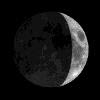In all forms of Buddhism, there are said to be four or five Dhyanas, or meditational states. Each of these meditational states corresponds with one of the four primordial elements of earth, water, fire and air. First Dhyana is characterized by meditating on earth, and the solid parts of the body. The formless meditational state, the abstract attainment is said to be “infinite space”. The second Dhyana is characterized by meditation on water and the liquid elements of the body, like blood. The abstract meditational insight is usually referred to as “infinite consciousness”—the flow of thoughts like water in a river. The third Dhyana is fire, and naturally heat the body emits is the meditation subject. The formless attainment is nothingness, probably referring to clearing the mind of thought. The fourth Dhyana is air and thus, the wind in the body, the air in the lungs is meditated upon. The spiritual fruit of such an endeavor is the state of “perception or not perception”, a slight out of body experience where psychic powers are said to develop. The fifth Dhyana refers to enlightenment in Buddhism or where the elements begin and simultaneously cease to be.
In Chinese metaphysics the fifth element is metal, whereas in western astrology and alchemy it is often lightning. These tokens for the connective structure between the elements, indicates energy as an element that is grounded in enlightenment. It is this energy of lightening or metal which is symbolic for Li and Qi, principle and material force in Confucian cosmology. Likewise, this energy is the manifestation of Kundalini serpent power is Indian metaphysics. It is the soul in Western religions, this force of energy that is a manifestation of power and wisdom in the East. The soul is perhaps the Western equivalent for the chakra, the qi, and the vital spirit which is referred to in many different ways in most religions across the world.


